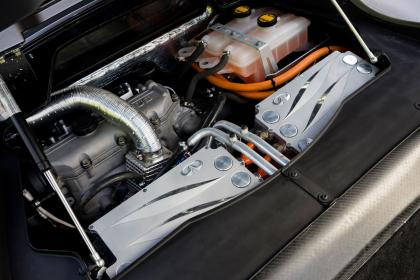Lithium-oxygen Super Electric Car Battery
New Lithium-oxygen super battery
The automotive world is on a steady progressive development, and the focus is creating alternative sources of energy. The worldwide demand for alternative sources of power continues to grow rapidly due to revolutionised industries such as the automotive industry.
Lithium-oxygen batteries represent the next generation energy storage devices. UK researchers at the University of Cambridge have created a battery that could outperform the lithium-ion technology whose technology in principle could power electric cars.
Is lithium-oxygen the ideal battery?
The creation of a lithium-oxygen battery overcomes some of the disadvantages of a regular lithium-ion battery. The said the battery boasts very high energy density, compared to a regular lithium ion battery. The high energy density also helps it to achieve 93 per cent efficiency and can theoretically store up to 10 times more energy than lithium-ion batteries. This undoubtedly gives it an edge over competing products across the world.
Although the common lithium battery dominates the electronics market as the main power source, it is not fully suited for use in electric cars. Lithium–oxygen batteries are the most promising system, the development of lithium-air batteries reduces the high cost of developing lithium-ion batteries in electric and plug-in vehicles. The heavy lithium-ion batteries battery packs are excessively bulky and they add extra weight to the cars. However, the Cambridge university team has overcome these practical challenges by the development of the new lithium-oxygen batteries.

Lithium-oxygen batteries are attractive because of their weight and cost. The battery is a fifth the weight of lithium-ion batteries and a fifth the cost to develop as well. The lithium oxygen battery has the potential to store much more energy than rechargeable lithium-ion batteries, which dominate the market. Most people are likely to adopt electric vehicles in future since the cost of owning and maintaining an electric vehicle will be less.
Researchers at University of Cambridge have found a way to alleviate two of the previous work batteries’ biggest barrier; their inefficiency and inability to be recharged many times. The new lithium oxygen battery employs different chemistry than previous work. The basic chemistry is simple. The cell generates electricity by combining lithium with oxygen to form lithium hydroxide. As a result, the performance of these batteries has been more stable and efficient.
The University of Cambridge group has been able overcome some of the practical barriers of the technology, including troublesome efficiency, performance, chemical reaction and potential safety issues. The most significant of these barriers is working out a way to increase the number of charge-discharge cycles that the batteries can withstand. More especially, the new design uses a form of carbon electrode made from grapheme to overcome the challenge of charge-discharge cycles. It is said that the new battery can be recharged 2,000 times.
Although the development of lithium oxygen super battery could theoretically meet the urgent demand for a high-energy power source, more work needs to be done before a commercially viable lithium-oxygen battery can be created. However we feel that this new technology will be here before we know it.
Additional EV Content Links;
New Electric Cars
Best Electric Cars
Why Buy Electric
Electric Car Reviews


